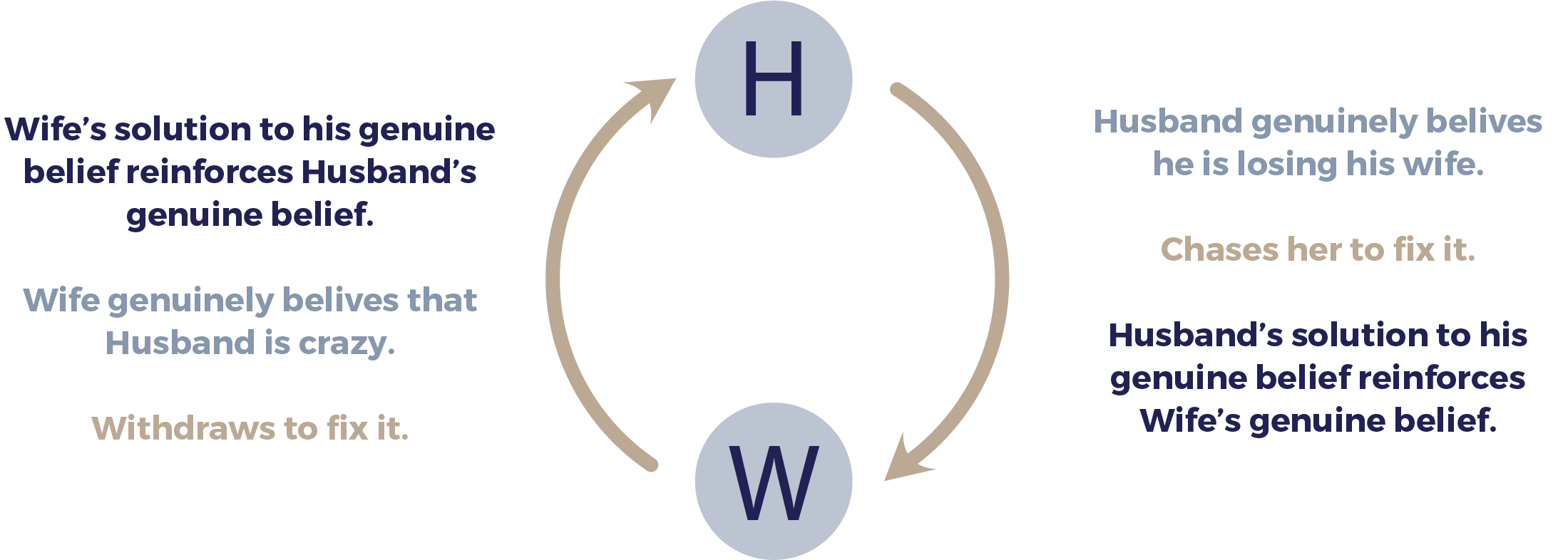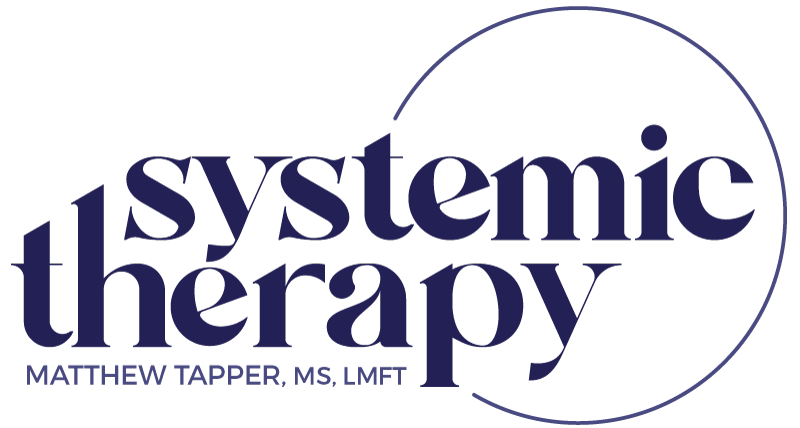What is Systemic Therapy?
Systemic Therapy is a different branch of therapy stemming from Systems Theory that has an empirically supported (backed by research) way of making sense of people, problems, and change that’s completely different than traditional psychotherapy. Systems Theory at its core understands how facets of life and nature are maintained in a homeostasis. This means that everything we know of in this world exists in a feedback loop or cycle. From the earth’s rotation around the sun and upon itself, to our known laws of physics and thermodynamics, to even our agriculture, our economy and all observed environmental habitats. There is no stable process that we can observe in this world that does not exist within a self-correcting feedback loop or cycle.
Over time, we would also discover that human beings get caught up in the same kinds of cycles or patterns of interaction with others, recognizing how human beings relate based on their own established truths (values, biases, and beliefs) then impacting others around them to reinforce these truths. This discovery led to the creation of Marriage and Family Therapy understanding first and foremost that an individual’s single pattern of thought, feeling, or behavior cannot exist in isolation from others around them. Thus, all problems are maintained in a homeostasis, meaning that if we’ve been struggling with the same problem for a long time, then our best solutions to rid ourselves of the problem are actually playing a role in maintaining our experience of it.
Couples & Families
Applying systemic thinking to a couple & family system is rather simple when thinking relationally rather than linearly. Consider the following diagram:
 *Note that this example pattern of relating is simplified and rudimentary*
*Note that this example pattern of relating is simplified and rudimentary*
It’s important to understand that every time this cycle completes itself, that the experience of the problem grows more intense and concrete, and the individual solutions to fix their own experience of the problem would also grow to match the intensity of the experience. Husband’s amplified experience may finally conclude that he has lost his Wife, then employing solutions of substances or escapism to cope with the real problem, that’s been haunting him the entire time. This problem would be what it means to him for him to lose his Wife. This subjective experience also does not exist in isolation, but also has no choice but to be tied to previous experiences of what it means to lose someone throughout his life. This could intrusive thoughts of “I’m not good enough, not manly enough, too ugly… ect.”. These subjective beliefs are likely what his brain has coded to be dangerous for most of his life and would be evident in other patterns of interaction.
It’s also important to understand that just because I discussed Husband’s contextual history does not mean that he was the problem. In fact, neither Husband nor Wife are the problem as both would make sense given their lived experience of the problem. However, that context offers us a better understanding of him and how he makes sense. This does not dismiss or excuse any genuine harm emotional or otherwise, and any harm caused would require accountability. The purpose of context is to offer an opportunity for a genuine shift or an “I haven’t thought it of it that way moment”. This kind of light bulb moment in relation to husband would mean that you are now genuinely a different person in relation to husband, and additionally now equipped with different ways of relating and solving the problem with him.
This is the great news about problems and change in systemic thinking. Though it’s true that neither you or I can change another human being, however if you experience genuine change at the level of intervention where the problematic relating is maintained, then everyone around you has no choice but to be changed by your change. If one thing genuinely changes within a system, then the current homeostasis of that system is broken, and the entire couple or family system has no choice but to establish a new one. The is the foundational thinking within Marriage and Family Therapy and how Couples & Family Therapy can offer a genuinely different relationship.
Individuals
When people think of Marriage and Family Therapy, they usually don’t suspect receiving quality therapy for an individual. However, applying a systemic lens to an individual isn’t so difficult either and you don’t have to invite anyone else in the room with you. From a systemic lens, all problems are maintained in a homeostasis, and I’m not only looking at the problematic pattern that you’re presenting with but also the pattern within all of your patterns. This means that your natural way of relating to self and others shares a common theme of relating connected to rigid truths (values, biases, beliefs). Often, some of these truths that individuals struggle with are connected to shame where they consider themselves to be broken or deficient in some way. Shame is when we think of ourselves as a problem rather than being connected to a problem. It actually makes sense why we would struggle with shame so much as a culture, because of the linear way in which we make sense of problems. This sort-of cause and effect way of problem solving means that only person within a conflict is valid, while the other suffers not only the defeat of being wrong, but also in the communication of “you don’t make sense”. Being trapped over a long period of time in a pattern of relating in this way, would likely result in depressive and anxious symptoms.
However, as we explore what it means to be you through your genuine lived experience over time, you’ll always find that you make sense. Again, this does not dismiss nor excuse any harm you’ve caused, but it would allow for a new way of relating with self and others that allows for having fault without shame. As an individual client, breaking the current homeostasis of your problem is always the goal and there’s many ways to go about intervening within the process.
